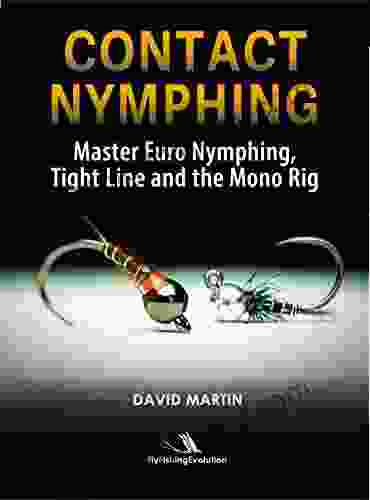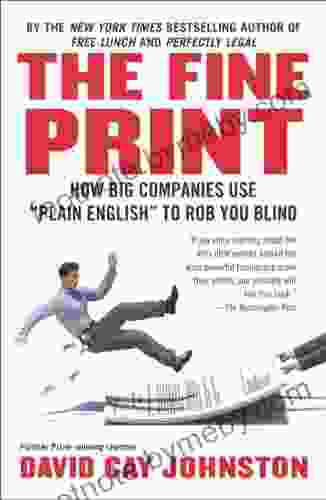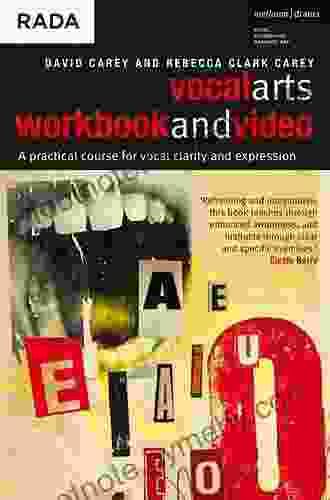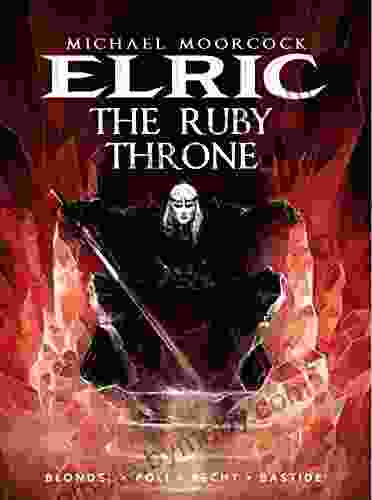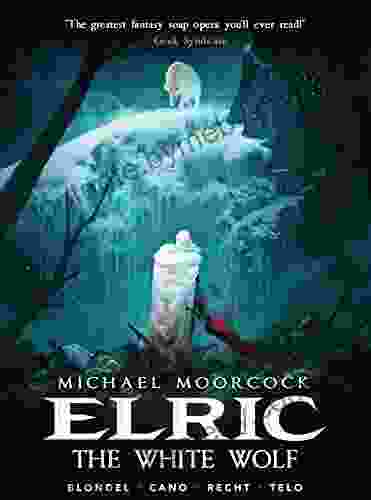Master Euro Nymphing: Unraveling the Mysteries of Tight Line and Mono Rig Fishing

Welcome to the world of Euro nymphing, a highly effective fly fishing technique specifically designed to target trout in complex waters. This specialized approach involves the use of the "tight line" method and the "mono rig," two key components that enable anglers to maintain precise control and sensitivity. In this comprehensive guide, we will delve into the intricacies of Euro nymphing, exploring the techniques, strategies, and equipment that will elevate your fly fishing game to new heights.
4.4 out of 5
| Language | : | English |
| File size | : | 34906 KB |
| Text-to-Speech | : | Enabled |
| Screen Reader | : | Supported |
| Enhanced typesetting | : | Enabled |
| Word Wise | : | Enabled |
| Print length | : | 184 pages |
| Lending | : | Enabled |
Chapter 1: The Fundamentals of Euro Nymphing
Euro nymphing emerged in Europe several decades ago and has since gained immense popularity worldwide. This innovative technique has revolutionized the way anglers approach fly fishing in challenging environments, such as deep pools, fast-flowing rivers, and areas with heavy vegetation. The key principle of Euro nymphing lies in maintaining a "tight line," keeping the line taut between the angler and the fly. This direct connection allows for immediate detection of subtle strikes and precise manipulation of the fly.
In addition to the tight line, Euro nymphing incorporates the use of a "mono rig," a specialized setup that enhances the sensitivity and control of the angler. The mono rig comprises a long section of monofilament line that is connected to the fly line. This monofilament section acts as a shock absorber, reducing the impact of the heavier fly line on the delicate presentation of the fly. Moreover, the mono rig helps to maintain a straight line between the angler and the fly, allowing for better strike detection and more precise drift control.
Chapter 2: Mastering the Tight Line Technique
Achieving a tight line is crucial for effective Euro nymphing. The constant tension on the line provides the angler with instant feedback on the fly's movements and the presence of strikes. There are several techniques for maintaining a tight line, each suited to different fishing conditions.
The "high-sticking" method involves holding the rod tip high, keeping the line elevated above the water's surface. This technique is particularly effective in slow-moving waters or when fishing at depth. The "low-sticking" method, on the other hand, entails holding the rod tip close to the water, allowing the line to follow the contours of the streambed. This technique excels in fast-flowing rivers, where the current can help to maintain a tight line.
Choosing the appropriate tight line technique depends on the fishing conditions and the angler's personal preferences. Regardless of the method employed, maintaining a tight line is essential for maximizing strike detection and fly control.
Chapter 3: Crafting the Mono Rig
The mono rig is an integral part of Euro nymphing, offering several advantages over traditional fly line setups. The monofilament section absorbs shock, preventing the heavier fly line from spooking fish or interfering with the fly's presentation. Additionally, the monofilament line is more flexible and less visible than fluorocarbon lines, enhancing the stealth of the rig.
Constructing a mono rig is a straightforward process. Begin by attaching a long section of monofilament line to the fly line using a knot such as the improved clinch knot or the surgeon's knot. The length of the monofilament section can vary depending on the depth and clarity of the water. A good starting point is a length equal to three times the depth of the water.
Once the monofilament section is attached, tie on a small nymph or jig as the terminal fly. A variety of nymphs and jigs can be used, depending on the target species and the specific fishing conditions. Experimenting with different fly patterns and sizes is often necessary to determine what works best in a particular situation.
Chapter 4: Reading Aquatic Entomology
Understanding aquatic entomology is paramount for successful Euro nymphing. Aquatic insects, such as caddisflies, mayflies, and stoneflies, are the primary food source for trout, and imitating these insects effectively is key to fooling fish. Studying the life cycles and behaviors of these insects will provide valuable information for selecting the appropriate fly patterns and fishing techniques.
Pay attention to the emergence patterns of aquatic insects throughout the year. Different species emerge at different times, and timing your fishing trips accordingly can significantly increase your chances of success. Observing the behavior of insects on the water's surface can also provide clues about the types of nymphs that are present and the feeding habits of the trout.
Chapter 5: Advanced Tactics and Strategies
Once you have mastered the basics of Euro nymphing, it's time to explore some advanced tactics and strategies to enhance your effectiveness on the water. Varying the speed and depth of your drift can entice strikes from reluctant fish. Try using different retrieves, such as dead-drifting, swing-drifting, or twitching the fly, to determine what works best for the conditions.
Additionally, consider using strike indicators to help you detect subtle strikes. Strike indicators can be attached to the mono rig or tied to the fly line itself. They provide a visual cue when a fish takes the fly, allowing for a quick and decisive hookset.
Euro nymphing is a highly effective fly fishing technique that opens up endless possibilities for anglers of all skill levels. By mastering the tight line method, crafting the perfect mono rig, understanding aquatic entomology, and employing advanced tactics, you can unlock the secrets of challenging waters and experience the thrill of consistent success. Remember, the journey of becoming a proficient Euro nympher is an ongoing one that requires patience, practice, and a passion for the sport.
So grab your rod, dive into the world of Euro nymphing, and rediscover the joy of fly fishing. With this comprehensive guide as your compass, you will embark on an adventure that will transform your angling experiences and bring you closer to the heart of the aquatic realm.
4.4 out of 5
| Language | : | English |
| File size | : | 34906 KB |
| Text-to-Speech | : | Enabled |
| Screen Reader | : | Supported |
| Enhanced typesetting | : | Enabled |
| Word Wise | : | Enabled |
| Print length | : | 184 pages |
| Lending | : | Enabled |
Do you want to contribute by writing guest posts on this blog?
Please contact us and send us a resume of previous articles that you have written.
 Book
Book Novel
Novel Page
Page Chapter
Chapter Text
Text Story
Story Genre
Genre Reader
Reader Library
Library Paperback
Paperback E-book
E-book Magazine
Magazine Newspaper
Newspaper Paragraph
Paragraph Sentence
Sentence Bookmark
Bookmark Shelf
Shelf Glossary
Glossary Bibliography
Bibliography Foreword
Foreword Preface
Preface Synopsis
Synopsis Annotation
Annotation Footnote
Footnote Manuscript
Manuscript Scroll
Scroll Codex
Codex Tome
Tome Bestseller
Bestseller Classics
Classics Library card
Library card Narrative
Narrative Biography
Biography Autobiography
Autobiography Memoir
Memoir Reference
Reference Encyclopedia
Encyclopedia Darwin V Ellis
Darwin V Ellis David Lipsky
David Lipsky Mili Fay
Mili Fay Suzy Hopkins
Suzy Hopkins Dave Collins
Dave Collins David Lang
David Lang Deborah Noyes
Deborah Noyes David Biedrzycki
David Biedrzycki Rachel Dougherty
Rachel Dougherty Bolu Babalola
Bolu Babalola David Huckvale
David Huckvale Brigid Coady
Brigid Coady David Shimwell
David Shimwell Dave Pelz
Dave Pelz Dean Littlepage
Dean Littlepage David Baer
David Baer Dave Liske
Dave Liske Aleatha Romig
Aleatha Romig David Rakel
David Rakel Roy Clark
Roy Clark
Light bulbAdvertise smarter! Our strategic ad space ensures maximum exposure. Reserve your spot today!
 Jeffrey CoxFollow ·6.7k
Jeffrey CoxFollow ·6.7k Bill GrantFollow ·17.1k
Bill GrantFollow ·17.1k Glen PowellFollow ·8.1k
Glen PowellFollow ·8.1k Michael ChabonFollow ·19.1k
Michael ChabonFollow ·19.1k Devin CoxFollow ·12.1k
Devin CoxFollow ·12.1k Davion PowellFollow ·11.2k
Davion PowellFollow ·11.2k Edwin CoxFollow ·16.7k
Edwin CoxFollow ·16.7k Jonathan HayesFollow ·16.1k
Jonathan HayesFollow ·16.1k

 Jayden Cox
Jayden CoxFaith Lies and the War on Terror: Exposing the Truth...
In the aftermath of the 9/11...

 Jack Powell
Jack PowellMad About the Trump Era: Mad Magazine 2024
The Trump...

 Warren Bell
Warren BellYou Got This: Tips for Women Who Want to Rock at Real...
Real estate...
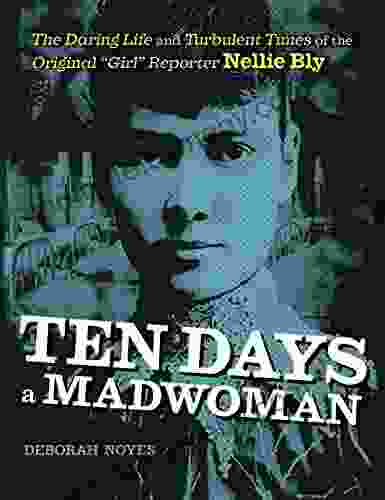
 Ernest Cline
Ernest ClineThe Daring Life and Turbulent Times of the Original Girl...
: Embracing the Spirit of Adventure In...
4.4 out of 5
| Language | : | English |
| File size | : | 34906 KB |
| Text-to-Speech | : | Enabled |
| Screen Reader | : | Supported |
| Enhanced typesetting | : | Enabled |
| Word Wise | : | Enabled |
| Print length | : | 184 pages |
| Lending | : | Enabled |


